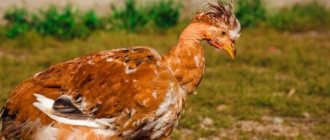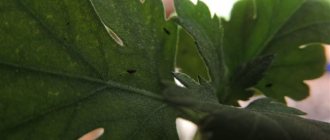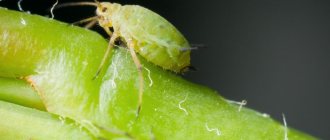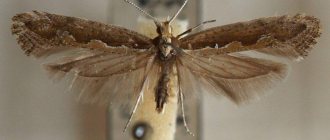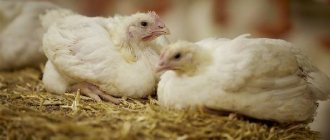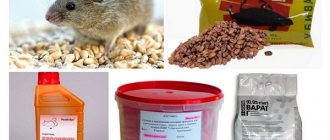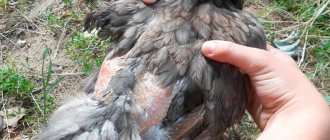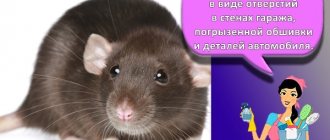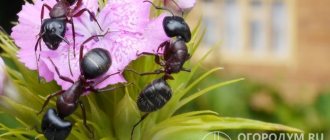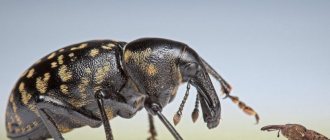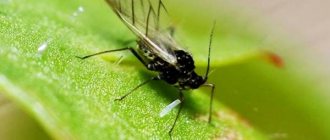Author: Tamara Altova. 09 September 2018
Category: Plant pests.
Cutworms are small whitish moths that resemble house moths and feed on garden crops. Moreover, it is not butterflies that damage plants, but their larvae - caterpillars. We will tell you how to deal with cutworms on tomatoes, which remedy for cutworms on tomatoes is considered the most effective, what folk remedies are available to combat cutworms and what chemicals will help get rid of this pest in tomato beds.
How to detect tomato cutworm in time
A careful inspection of the tomato bed will reveal signs of damage. The vegetable grower will not be able to see the butterfly itself. But the caterpillar feeds and traces of its “dinners” can be found. To do this you should inspect:
- leaves, especially the lower ones;
- shoots;
- buds;
- flowers.
Unfortunately, the vegetable grower becomes aware of the presence of cutworms on the plot only when he sees huge holes in the tomatoes. Sometimes you can see a caterpillar in them. Having made a hole, she decides not to leave, but to rest where she had eaten.
Brief description of the pest
Adult moth
Cutworms, sometimes called noctules, belong to the class of insects (order Lepidoptera). They were first described at the very beginning of the 19th century (1809), at which time their Latin name was proposed - Latreille, which is still used today. Almost 35,000 of its species are known, but no more than 2,000 of them have been recorded in the Russian Federation, and not all of them harm garden plantings.
The cutworm butterfly is an outwardly unremarkable pest. The average wingspan is no more than 45 mm, although some species (for example, Eudocima tyrannus or Catocala nivea) are much larger in size - up to 13-15 cm. The head is round, the color of the adult butterfly is gray and inconspicuous, it somehow resembles the well-known mole. The length of the caterpillar is about 30 mm, the main color is green, but there are specimens with a pinkish-brown color.
The armyworm is omnivorous, so it can destroy not only tomatoes, but also cabbage, beans, peppers, eggplants, beets or rutabaga. The pest first of all eats the leaves, and only then switches to the fruits. Some of its species (for example, the gnawing cutworm) feed on underground parts of plants.
Important! Butterflies do not live long - from 2 weeks to 1 month, egg development lasts only 12 days, and the caterpillar phase lasts about 40. This is the main difficulty in fighting the armyworm: it is quite difficult to accurately calculate the time when caterpillars emerge from oviposition. If you “miss” by at least 2-3 days, the pest will gnaw through the shell of the tomato, after which it will become almost impossible to identify it. Therefore, the fight against the cutworm on tomatoes will only be quite effective if you regularly inspect the shoots and take the necessary measures in a timely manner.
Reasons for appearance
Sometimes a vegetable grower does not even suspect that there are cutworms on his plot. Pre-winter plowing and severe frosts regulate the pest population. Those that survive do not do much harm, except for a few eaten tomatoes.
The situation is different in the southern regions. The armyworm population is growing from year to year and it is becoming more and more difficult to fight. This is possible for the following reasons:
- Lack of autumn farming culture. If it is not customary to plow the soil in the fall or dig up the garden, the pupa becomes inaccessible to frost.
- Not thoroughly removing weeds and plant debris after harvesting the garden.
- A huge number of weeds in the garden or neighbors' plots. In this case, she has every chance of remaining unnoticed and continuing to reproduce.
Attention! If frost helps northerners, then southerners should clean their gardens more carefully.
Options for getting rid of the pest
Many chemicals have been developed to protect plants, but first you should try more environmentally friendly methods. Among them, special agrotechnical methods of soil cultivation, the use of special traps and the proper use of fertilizers stand out. But treating tomatoes against cutworms with powerful insecticides, which many summer residents consider to be the only option, despite its effectiveness, can have serious side effects.
Secrets of agricultural technology
- Remove all weeds from the area regularly. This is a rather tedious task, but in many cases you can thereby get rid of the pest without using any chemicals.
- The cutworm on tomatoes really does not like being in close proximity to some medicinal plants. Therefore, areas planted with tomatoes should be planted, for example, with calendula.
- At the end of the season, after harvesting, carefully dig up the soil. By doing this, you will not only prepare it for the cold season, but also destroy the wintering larvae. The optimal depth is at least 15-20 centimeters.
- Manual pest removal. A very effective technique if the fall armyworm has not yet spread on the tomatoes.
The harmfulness of the cotton bollworm lies in the spoilage of fruits
Folk remedies
- Spray the plantings with infusion of garlic arrows 2-3 times a month. To do this, take 400-500 g of carefully crushed raw materials, fill a 3-liter jar with it and fill it to the brim with water. Let the product brew for 5-7 days and strain. For 10 li of clean water you will need 50-60 g of product and the same amount of crushed laundry soap. The technique is effective for all types of pests (including if your area is occupied by the cotton bollworm).
- A decoction of wormwood is great for spraying. You will need 600-700 g of fresh herbs, which should be poured into 5 liters of boiling water and left for several days in a dry and dark place. Before use, dilute the prepared infusion with water in a ratio of 1:10.
- The universal infusion is a safe and effective preparation for the cutworm on tomatoes. It is prepared on the basis of tobacco, celandine, wormwood and shag (70-80 g of each ingredient). Add 160-180 g of chopped garlic and 10 liters of hot water to the resulting mixture, then mix the mixture thoroughly and leave for a day. Immediately before spraying, add a little crushed laundry soap (about 1/4 of a bar).
Practice-tested insecticides
If the infestation is large, it is important to choose drugs that destroy the armyworm at different stages of development.
- "Lepidocide." A powerful biologically active drug that helps cope with many pests. Consumption rate - from 0.5 to 1 liter of substance per hectare (volume of working fluid - from 200 to 400 l). The processing interval is 7-8 days.
- "Decis Expert". A universal contact preparation with a wide spectrum of action. The duration of action, if you are specifically interested in protecting tomatoes, is at least 14 weeks, and the first results can be observed after 1-2 hours. Consumption rate - 0.1 l per hectare (volume of working fluid - 200-400 l). Apply strictly during the growing season.
- "Karate Zeon". A good pyrethroid insecticide that also copes with the disinfestation of granaries. The consumption rate is 0.3-0.4 liters per hectare (for its processing you will need 300-400 liters of the mixture). To enhance the effect, we recommend treating the area twice with an interval of 30-35 days. Prepare the mixture immediately before spraying. "Karate Zeon" is effective against many types of pests, which also include the cotton bollworm.
- "Arrivo". Contact insecticide with high resistance to heat, economical and very effective. The consumption of the drug is about 0.3 liters per hectare (to treat 1 hectare you will need from 200 to 400 liters of the mixture). It is sold under the names “Shar Pei”, “Cyperon”, “Sherpa” and “Tsitkor”.
- "Inta-Vir". The drug is effective against 52 types of garden and vegetable pests. Available in the form of tablets (8 g) or water-soluble powder. Belongs to the category of moderately dangerous. If the armyworm on tomatoes has become particularly prolific, Inta-Vir can be used simultaneously with other pesticides if they do not have a strong alkaline reaction. Consumption rate – 1 tablet per 10 liters of water, spraying should be carried out during the growing season.
- "Proclamation." A translaminar insecticide, the main difference from its analogues is its natural origin. The main active ingredient is emamectin benzoate. The optimal use scheme if the cutworm on tomatoes bothers you is from 0.3 to 0.4 liters per hectare, liquid consumption is standard (200-400 liters of mixture). It is not recommended to use the product together with preparations based on fosethyl aluminum and liquid mineral fertilizers.
Attention! Not all drugs against cutworms can be used to get rid of other garden and garden pests.
All the measures to destroy armyworms on tomatoes that you met in this article have proven their effectiveness many times. Although experienced tomato growers in some cases (rare soil type, special weather conditions) use their own recipes. We are sure that you also have your own secrets on how to deal with cutworms on tomatoes. We will be glad if you share it with us readers.
Signs of defeat
The cutworm butterfly can only be seen at night. But its presence in a tomato plot is not difficult to notice:
- If you look closely at the underside of tomato leaves, you can see eggs. If there are not many insects, then searching for oviposition may be difficult;
- the lower leaves on the tomato bushes, and then the upper ones, become scabbed. The caterpillar eats away the soft tissue of the leaf blade, but the vein remains. So she moves from the lower leaf to the upper one, leaving behind the skeletons of the leaves;
- You can catch the caterpillar eating and examine it late in the evening, when it has already climbed up the shoot to the leaf;
- if there are a lot of insects, then the tomato plantings look gloomy: the leaves and buds are worn out, the fruits are holed. Further, the caterpillar becomes more and more voracious and the tomatoes become covered with eaten holes;
- the gnawed leaf begins to turn black and dry out;
- large brown tomatoes are trying to heal, but they have little success. The process of decay begins.
Folk methods of struggle
Decoction recipes
- Wormwood . Soak 1 kg of fresh parts of the plant (stems and leaves can be used) in 3 liters of water and boil for 15-20 minutes. This decoction is completely harmless to people, so it can be used often.
- Tomato tops . Acts against cabbage cutworm and its larvae. For 10 liters of water take about 3.5 - 4 kg of fresh raw materials. Cook for 25-30 minutes, filter and dilute with water in a ratio of 1:3.
- Red or black elderberry . Flowers and leaves (300-400 g) must be boiled in a bucket of water for half an hour. Add liquid soap to the working solution - 40-50 grams.
- Peppermint (water pepper) is a very effective means of killing caterpillars. Use fresh plants cut in June or July. A bucket of water requires 1 kg of raw materials. After boiling for 30 minutes, the broth must be cooled and filtered.
- Bitter red pepper . You can use both dry (500 g) and fresh (1 kg) raw materials. It must be boiled in 10 liters of water for about an hour. The decoction must steep for at least 24 hours. Before processing, it is diluted in cold water in a ratio of 1 part decoction to 7-8 parts water.
- Sarepta mustard . Dry powder (50 g) must be boiled in a liter of water and left to cool for a while. Close tightly and leave for at least a day. Dilute this volume with cold water in an amount of 20 liters. The decoction is used for spraying affected plants and treating planting material.
Infusion recipes
- Large burdock (burdock) . Finely chop the leaves and stems and place them in a bucket, filling it to the middle, adding water to the brim. Cover and leave for 2-3 days. To improve adhesion, you can add liquid soap - 40-50 grams.
- Large-flowered delphinium . Grind the inflorescences (100 g) and leave for 2 days in a liter of water under a closed lid.
- Onions or green onions . A quarter of an average onion is required per liter of water. It is better to grind it, leave it to infuse overnight (10-12 hours), filter it and use it to treat plants. If you feel sorry for the onion, you can use the peel (7-8 g per liter).
- Garlic . Infuse a couple of cloves in a liter of warm water for 3-4 days. For spraying, dilute the infusion with 5 parts of water.
- Black henbane . This plant becomes most effective during the flowering period. At this time, cut off the above-ground part, chop it and fill it with water - 10 liters per 1 kg of raw materials. Leave for 11-13 hours.
Read on to learn how to treat tomatoes against cutworms.
Other recipes
- Wood ash, lime and tobacco powder . The components are mixed in equal quantities and the affected plants are pollinated. Used against cutworm caterpillars.
- Liquid soap and wood ash . Pour 2 cups of ash and 1-2 dessert spoons of any soap into a bucket of cold water. Used for spraying plants.
- Potassium permanganate . Treating plants with a manganese solution has a triple benefit - it works as a means of combating cutworms, as a fertilizer and as a disinfectant that kills bacteria and viruses. To spray bushes and young seedlings, make a glass of a strong dark solution of potassium permanganate and pour it into a bucket of water, stir very well.
- Potassium chloride and superphosphate . Also helps against aphids. 5 g of potassium and 10 g of superphosphate are diluted in a bucket of water. The mixture is infused for about a day, used several times with an interval of 8-9 days, up to 3 times per season.
- Kerosene . 700-850 ml of kerosene and 350-450 g of soap (preferably laundry soap, but any other is possible). Dissolve the soap in a liter of hot water, carefully pour kerosene into it in a small stream and add another 9 liters of water. Stir all this and use immediately to treat plants.
Double effect - destruction of cutworm caterpillars and potassium-phosphorus fertilizer.
Life cycle
Depending on the species and area of distribution, the life cycle differs slightly in time, but is basically as follows:
- a butterfly that lays eggs on a leaf plate at night;
- they mature and after some time the larva, the caterpillar, hatches;
- young caterpillars feed on the leaf and, as they grow, move away from each other in search of food;
- During the growth period, they molt and, having reached maturity, fall to the ground to pupate. By secreting sticky substances and sticking dust to itself, the cocoon becomes the same as that of other butterflies. It can lie on the ground or be slightly buried 2-4 cm in the ground. The growth of the pupa lasts from 3 to 30 days;
- After some time in the summer, a butterfly flies out of the pupa. If it is deep autumn, the pupa overwinters in the ground;
- The emerging butterfly still needs food for the maturation of reproductive products. For several days she feeds on pollen, then mates;
- Now she again lays eggs on the bottom of the leaf.
The life cycle of the cutworm in northern latitudes is interrupted by cold and frost. In the southern regions it is continuous.
Means of struggle
Biological drugs
They are divided into 2 groups - bacterial and avermectins . Bacterial agents contain microbial toxins with a neurotoxin effect on pests.
Avermectins are waste products of streptomycetes pathogenic fungi. They also destroy mites and nematodes.
- Dendrobacillin. A bacterial agent that is effective against cutworms and safe for humans. Consumption rate: 25-30 g per bucket of water. You can do up to 2 treatments per season.
- Bitoxibacillin. A product of bacterial activity that inhibits the production of digestive enzymes disrupts intestinal function. In addition, it has a negative impact on all subsequent generations of the moth. The consumption rate is quite economical - about 20 ml of product per hundred square meters, first diluted in a bucket of water.
- Lepidocide. A bacterial agent that acts against any leaf-eating caterpillars, including cutworms. The consumption rate is 25-35 g per bucket. Enough to process 1-2 acres.
- Entobacterin. Microbiological remedy for leaf-eating caterpillars. The consumption rate is 3.5 kg per hectare of area.
- Fitoverm . Bacterial preparation against many pests, including all types of cutworms. Consumption depends on the type of crop being treated and ranges from 1 to 4 ml per bucket of water.
- Agravertine . A product obtained from fungi. It has a long shelf life, is safe for people and the environment, and works against most pests. Consumption: 3 ml of product per liter of water.
- Aktofit . An innovative product from the avermectin series. Consumption 4 ml per 1 l.
- Nature Guard . An insecticide from the Sophora plant with neurotoxin properties. Causes paralysis of limbs and death of pests. Consumption: 10 ml, diluted in 5 liters of water.
Chemicals
They are divided into neonicotinoids, organophosphorus compounds and pyrethroids. Modern products of the latest generations often have a combined composition.
- Proteus . A two-component drug consisting of deltamethrin (pyrethroid) and thiacloprid (neonicotinoid). The composition also includes oil, which protects the main substances from washing off and evaporation. Up to 5 liters of working solution obtained from 7 ml of product are consumed per 1 sq.m.
- Zolon. Organophosphorus agent with high toxicity. It has selective properties and does not harm beneficial insects. Consumption - 2 ml per 5 liters of working solution.
- Karate - Zeon . Pyrethroid class insecticide. Destroys caterpillars and adults. 100 ml of the drug is consumed to treat a hectare of area.
- Decis is a pro. Effective against all types of cutworms, including gnawing ones. Used to treat the plant itself and the soil around it. To make a treatment solution, mix 1 g of the product with a bucket of water. The volume is enough for 2.5 acres.
- Fury . Analogue - Kinmiks. Preparations of the pyrethroid group. Contact and intestinal remedy against many pests. Consumption per bucket of water is 1.5 ml of product.
- Bazudin . Granular soil treatment agent. Use in damp soil increases its effectiveness. To process a hectare of plantings, about 20 kg of granules are required.
- Stefesin . Synthetic pyrethroid with enteric contact route of penetration. Consumption of 1.5 ml of product per bucket of water to treat 100 sq.m. landing
Organophosphorus agents with identical effects also include Dursban, Fufanon, Danadim.
Read more about folk methods of struggle.
Prevention measures
Farming practices will greatly help to get rid of armyworms on tomatoes in large quantities, although it is difficult to completely defeat the pest. By adhering to simple rules and following agrotechnical methods, you can protect the crop already in the next season. To do this you need:
- carry out autumn plowing of the garden and fallow;
- monitor the cleanliness of the vegetable plot and promptly control weeds;
- carry out regular irrigation of crops. It has been observed that noctuid moth pupation does not occur on irrigated soils;
- Apply insecticides promptly to combat armyworm caterpillars.
Additional Tips
Timely use of chemicals or home recipes to get rid of caterpillars can give good results.
Here are some more useful tips to help make your fight against armyworms more effective:
- when treating tomato bushes with chemicals, you must strictly follow the instructions indicated on the packaging;
- observe the timing of repeated treatments of tomatoes; on average, the interval between sprayings is from 7 to 14 days;
- chemicals against the pest are used only during the growth and flowering of tomatoes or the formation of ovaries;
- to destroy caterpillars hiding in the ground during the day, regularly loosen the soil between the rows of tomatoes;
- If a small number of pest eggs are found on plant leaves, they can be carefully collected by hand until the caterpillars appear.
Important! To combat the cutworm during the ripening and harvesting period of tomatoes, only folk remedies are used.
What does a tomato scoop look like photo
Looking at the photo of the scoop, you can understand that moths have an unusual and very diverse color. We must remember that they are all pests and eat everything.
The classification of cutworms is approximate and is constantly being improved. This is why one scoop is often confused with another, and this is not strange.
Brief description of the pest
Adult moth
Cutworms, sometimes called noctules, belong to the class of insects (order Lepidoptera). They were first described at the very beginning of the 19th century (1809), at which time their Latin name was proposed - Latreille, which is still used today. Almost 35,000 of its species are known, but no more than 2,000 of them have been recorded in the Russian Federation, and not all of them harm garden plantings.
The cutworm butterfly is an outwardly unremarkable pest. The average wingspan is no more than 45 mm, although some species (for example, Eudocima tyrannus or Catocala nivea) are much larger in size - up to 13-15 cm. The head is round, the color of the adult butterfly is gray and inconspicuous, it somehow resembles the well-known mole. The length of the caterpillar is about 30 mm, the main color is green, but there are specimens with a pinkish-brown color.
The armyworm is omnivorous, so it can destroy not only tomatoes, but also cabbage, beans, peppers, eggplants, beets or rutabaga. The pest first of all eats the leaves, and only then switches to the fruits. Some of its species (for example, the gnawing cutworm) feed on underground parts of plants.
Important! Butterflies do not live long - from 2 weeks to 1 month, egg development lasts only 12 days, and the caterpillar phase lasts about 40. This is the main difficulty in fighting the armyworm: it is quite difficult to accurately calculate the time when caterpillars emerge from oviposition. If you “miss” by at least 2-3 days, the pest will gnaw through the shell of the tomato, after which it will become almost impossible to identify it. Therefore, the fight against the cutworm on tomatoes will only be quite effective if you regularly inspect the shoots and take the necessary measures in a timely manner.
What plants repel caterpillars?
Pests will avoid places where bird cherry bushes grow. Many useful and medicinal plants repel caterpillars:
- mint;
- calendula;
- coriander;
- sage;
- thyme;
- thyme.
Butterflies are afraid of strong odors. Cutworms and whiteflies are repelled by certain types of flowers, such as geraniums, cornflowers and marigolds.
Advice! At the beginning of spring, white mustard seeds can be planted in future tomato beds. When the plant sprouts, it will saturate the ground with its scent. After this, the soil is loosened and tomato seedlings are planted. Butterflies will not be able to lay eggs in such soil.
External manifestations of caterpillar activity
You can notice that pests have appeared on tomatoes based on several signs:
- The tomato leaves are covered with a white coating.
- Holes appear in green fruits.
- The foliage turns black, quickly dries out and falls off.
- The tomatoes turn dark brown and fall off the branches.
- At night, white and gray butterflies fly over the tomatoes.
You can check for caterpillars in your area using a butterfly trap. To make it, a regular plastic bottle with a narrow neck is suitable. Sweet fermented liquid is poured inside. Kvass, jam or berry compote will do. The trap is set at night. If in the morning there are several pest butterflies inside the jar, parasitic caterpillars have settled on the tomatoes.
Characteristic
As you can see in the photo, the potato cutworm (imago) is a butterfly with grayish-brown fore wings, the span of which can be from 28 to 40 mm. They show dark brown transverse lines, spots and a wide border running along the edge. The hind wings are yellow-pink or grayish-yellow, with a dark stripe in the apical third. There are a pair of long antennae on the head, they are wide at the base and taper towards the tips.
The potato cutworm larva is a small caterpillar whose body can range in color from light yellow to red-brown or gray-brown. A dark stripe runs along the back. The head is a darker shade, without spots or lines. The chest shield is brown, the supporting setae are red-brown, the spiracles are black. The body length of the larvae averages from 40 to 45 mm.
The potato cutworm pupa is yellow-brown in color and approximately 18-23 mm long.
The eggs are hemispherical. At first they are painted in a light yellowish color, later their color changes and takes on a pink tint. The egg is small in diameter - up to 0.8 mm, in height - no more than 0.4 mm.
The fertility of female potato cutworms is from 70 to 90 eggs. In August-September, butterflies lay eggs on foliage or on the lower part of the stem of wild food plants, placing eggs in parallel rows. There can be from 20 to 45 eggs in one row. Being in the stage of embryonic development, parasites survive the winter.
On a note! Younger caterpillars can also overwinter in the soil!
With the arrival of stable warmth - around the end of April or the first ten days of May - caterpillars emerge from the eggs, go to the above-ground part of thick-stemmed plants and begin active feeding. Having reached an older age, the larvae descend to the upper layers of the soil, where they pupate. Subsequently, adults emerge from the pupa.
Options for getting rid of the pest
Many chemicals have been developed to protect plants, but first you should try more environmentally friendly methods. Among them, special agrotechnical methods of soil cultivation, the use of special traps and the proper use of fertilizers stand out. But treating tomatoes against cutworms with powerful insecticides, which many summer residents consider to be the only option, despite its effectiveness, can have serious side effects.
Secrets of agricultural technology
- Remove all weeds from the area regularly. This is a rather tedious task, but in many cases you can thereby get rid of the pest without using any chemicals.
- The cutworm on tomatoes really does not like being in close proximity to some medicinal plants. Therefore, areas planted with tomatoes should be planted, for example, with calendula.
- At the end of the season, after harvesting, carefully dig up the soil. By doing this, you will not only prepare it for the cold season, but also destroy the wintering larvae. The optimal depth is at least 15-20 centimeters.
- Manual pest removal. A very effective technique if the fall armyworm has not yet spread on the tomatoes.
The harmfulness of the cotton bollworm lies in the spoilage of fruits
Folk remedies
- Spray the plantings with infusion of garlic arrows 2-3 times a month. To do this, take 400-500 g of carefully crushed raw materials, fill a 3-liter jar with it and fill it to the brim with water. Let the product brew for 5-7 days and strain. For 10 li of clean water you will need 50-60 g of product and the same amount of crushed laundry soap. The technique is effective for all types of pests (including if your area is occupied by the cotton bollworm).
- A decoction of wormwood is great for spraying. You will need 600-700 g of fresh herbs, which should be poured into 5 liters of boiling water and left for several days in a dry and dark place. Before use, dilute the prepared infusion with water in a ratio of 1:10.
- The universal infusion is a safe and effective preparation for the cutworm on tomatoes. It is prepared on the basis of tobacco, celandine, wormwood and shag (70-80 g of each ingredient). Add 160-180 g of chopped garlic and 10 liters of hot water to the resulting mixture, then mix the mixture thoroughly and leave for a day. Immediately before spraying, add a little crushed laundry soap (about 1/4 of a bar).
Practice-tested insecticides
If the infestation is large, it is important to choose drugs that destroy the armyworm at different stages of development.
- "Lepidocide." A powerful biologically active drug that helps cope with many pests. Consumption rate - from 0.5 to 1 liter of substance per hectare (volume of working fluid - from 200 to 400 l). The processing interval is 7-8 days.
- "Decis Expert". A universal contact preparation with a wide spectrum of action. The duration of action, if you are specifically interested in protecting tomatoes, is at least 14 weeks, and the first results can be observed after 1-2 hours. Consumption rate - 0.1 l per hectare (volume of working fluid - 200-400 l). Apply strictly during the growing season.
- "Karate Zeon". A good pyrethroid insecticide that also copes with the disinfestation of granaries. The consumption rate is 0.3-0.4 liters per hectare (for its processing you will need 300-400 liters of the mixture). To enhance the effect, we recommend treating the area twice with an interval of 30-35 days. Prepare the mixture immediately before spraying. "Karate Zeon" is effective against many types of pests, which also include the cotton bollworm.
- "Arrivo". Contact insecticide with high resistance to heat, economical and very effective. The consumption of the drug is about 0.3 liters per hectare (to treat 1 hectare you will need from 200 to 400 liters of the mixture). It is sold under the names “Shar Pei”, “Cyperon”, “Sherpa” and “Tsitkor”.
- "Inta-Vir". The drug is effective against 52 types of garden and vegetable pests. Available in the form of tablets (8 g) or water-soluble powder. Belongs to the category of moderately dangerous. If the armyworm on tomatoes has become particularly prolific, Inta-Vir can be used simultaneously with other pesticides if they do not have a strong alkaline reaction. Consumption rate – 1 tablet per 10 liters of water, spraying should be carried out during the growing season.
- "Proclamation." A translaminar insecticide, the main difference from its analogues is its natural origin. The main active ingredient is emamectin benzoate. The optimal use scheme if the cutworm on tomatoes bothers you is from 0.3 to 0.4 liters per hectare, liquid consumption is standard (200-400 liters of mixture). It is not recommended to use the product together with preparations based on fosethyl aluminum and liquid mineral fertilizers.
Attention! Not all drugs against cutworms can be used to get rid of other garden and garden pests.
All the measures to destroy armyworms on tomatoes that you met in this article have proven their effectiveness many times. Although experienced tomato growers in some cases (rare soil type, special weather conditions) use their own recipes. We are sure that you also have your own secrets on how to deal with cutworms on tomatoes. We will be glad if you share it with us readers.
Biological methods
In nature, the enemies of pest caterpillars are Trichogramma. They lay eggs in the cocoons of butterflies, thereby destroying garden pests. Insects can be purchased at a special store. They are released onto tomato bushes 3 times per season. It is necessary to plant 5000 trichograms per 1 hectare of land.
Bracones pose a danger to caterpillars. These are predatory flies that parasitize the larvae of other insects. The females pierce the caterpillar's cover and inject poison, which stops the digestive system. Then the adult injects about 20 larvae into the victim’s body. Bracons eat the caterpillar from the inside until they reach adulthood.
How to deal with caterpillars on tomatoes in a greenhouse
The death of tomatoes from caterpillars is a problem familiar to many gardeners.
Most often, plantings are affected by the tomato cutworm, whose peak activity occurs in mid-summer. In just 20 days of being in the caterpillar stage, this pest can leave a farmer without a harvest. Preventive measures will help prevent the appearance of armyworms in garden beds. If it is not possible to protect the plantings from damage, they use “heavy artillery” - contact-intestinal insecticides. Along with them, folk remedies and entomophages (microscopic insects) are used. They destroy the pest no less effectively and allow you to collect an environmentally friendly product.
How to treat tomatoes against caterpillars in a greenhouse? What drugs are the most effective? You will receive detailed answers to these and other questions in the article.
